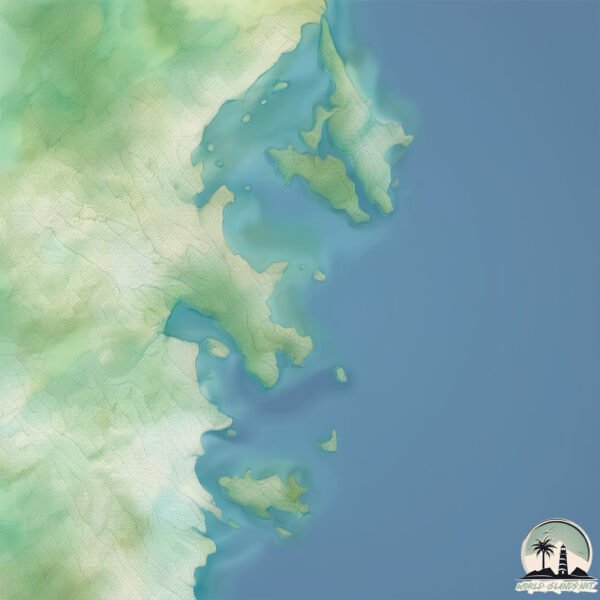Hòn Dung

Welcome to Hòn Dung, a Tropical island in the South China Sea, part of the majestic Pacific Ocean. This guide offers a comprehensive overview of what makes Hòn Dung unique – from its geography and climate to its population, infrastructure, and beyond. Dive into the details:
- Geography and Size: Explore the island’s size and location.
- Climate and Weather: Weather patterns and temperature.
- Topography and Nature: Uncover the natural wonders of the island.
- Infrastructure and Travelling: Insights on reaching, staying, and making the most of your visit.
- News and Headlines: Latest News.
Geography and size of Hòn Dung
Size: 0.441 km²
Coastline: 2.5 km
Ocean: Pacific Ocean
Sea: South China Sea
Continent: Asia
Hòn Dung is a Tiny Island spanning 0.441 km² with a coastline of 2.5 km.
Archipel: –
Tectonic Plate: Sunda – Extends across Southeast Asia, encompassing parts of the Sunda Shelf, known for its interaction with the Australian Plate, contributing to volcanic activity in Indonesia.
The geographic heart of the island is pinpointed at these coordinates:
Latitude: 12.34024216 / Longitude: 109.34833082
Climate and weather of Hòn Dung
Climate Zone: Tropical
Climate Details: Tropical Savanna, Wet
Temperature: Hot
Climate Characteristics: Defined by distinct wet and dry seasons with high temperatures year-round. Pronounced rainfall occurs during the wet season, while the dry season is marked by drought.
Topography and nature of Hòn Dung
Timezone: UTC+07:00
Timezone places: Asia/Jakarta
Max. Elevation: 36 m
Mean Elevation: 17 m
Vegetation: Evergreen Broadleaf Forest
Tree Coverage: 78%
The mean elevation is 17 m. The highest elevation on the island reaches approximately 36 meters above sea level. The island is characterized by Plains: Flat, low-lying lands characterized by a maximum elevation of up to 200 meters. On islands, plains are typically coastal lowlands or central flat areas.
Dominating Vegetation: Evergreen Broadleaf Forest
Characterized by dense, lush canopies of broadleaf trees that retain their leaves year-round. These forests are typically found in tropical and subtropical regions and are known for their high biodiversity. Hòn Dung has a tree cover of 78 %.
Vegetation: 1 vegetation zones – Minimal Diversity Island
These islands exhibit the most basic level of ecological diversity, often characterized by a single dominant vegetation type. This could be due to extreme environmental conditions, limited land area, or significant human impact. They represent unique ecosystems where specific species have adapted to thrive in these singular environments.
Infrastructure and Travelling to Hòn Dung
Does the island have a public airport? no.
There is no public and scheduled airport on Hòn Dung. The nearest airport is Cam Ranh International Airport / Cam Ranh Air Base, located 34 km away.
Does the island have a major port? no.
There are no major ports on Hòn Dung. The closest major port is NHA TRANG, approximately 14 km away.
The mean population of Hòn Dung is 1025 per km². Hòn Dung is Densely Populated. The island belongs to Vietnam.
Continuing your journey, Hòn Lớn is the next notable island, situated merely km away.
Dục Quỷ Xâm Chiếm Trái Đất, Gặp Ngay Thánh Trừ Tà || review phim hàn island Hòn Đảo Ma Quái 2023



Vietnam is classified as Emerging region: G20: Group of Twenty – Major economies comprising both developed and emerging countries, representing the world’s largest economies. The level of income is Lower middle income.
News – Latest Updates and Headlines from Hòn Dung
Stay informed with the most recent news and important headlines from Hòn Dung. Here’s a roundup of the latest developments.
Please note: The data used here has been primarily extracted from satellite readings. Deviations from exact values may occur, particularly regarding the height of elevations and population density. Land area and coastline measurements refer to average values at mean high tide.
